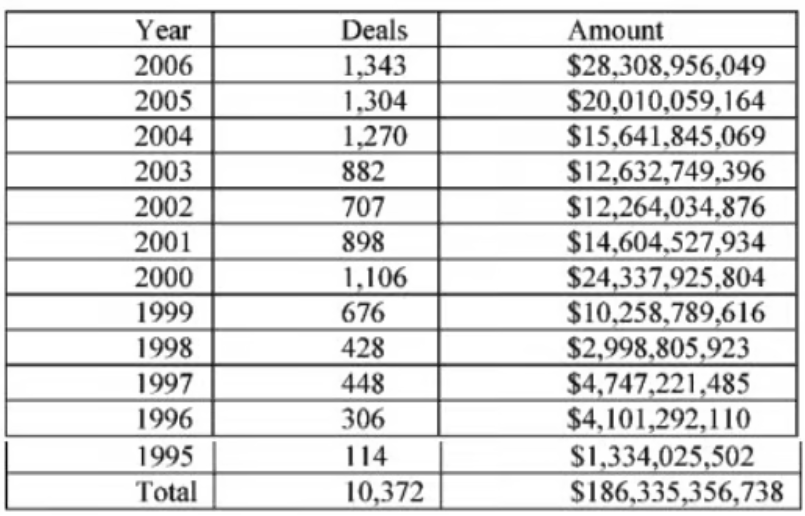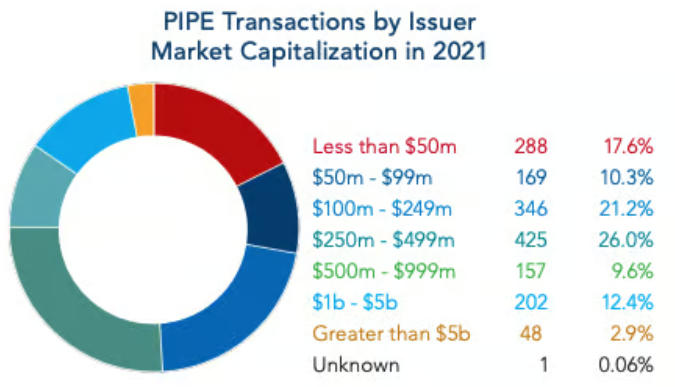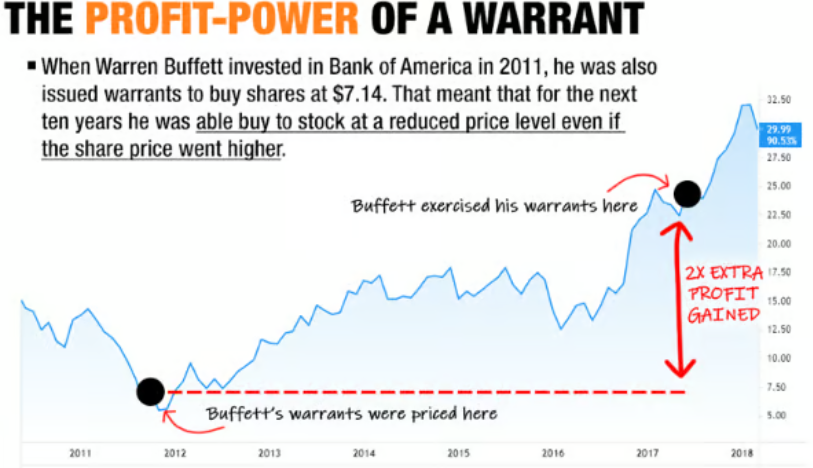Have you ever wished you could go back in time and buy a stock that just went up 25%, 50%, even 100% BEFORE it climbed higher? Or better yet, negotiate a deal directly with the company that allows you to buy stock at a discount today, and more for a fixed price – no matter how high the company’s stock goes in the future?
Thanks to a little-known investment opportunity called a PIPE – short for Private Investment In Public Equity – you can do just that. For 100 years, this secret “backdoor” into the best investment opportunities was off-limits to regular investors. But thanks to a new law, this so-called “Wall Street Double Dip” is now available to everyday people to take advantage of.
In this article, we’ll unravel the mystery behind PIPEs—one of the most profitable deal structures in the capital markets, and how retail investors can leverage an investment strategy typically reserved for large institutional investors and insiders.
Key Takeaways:
Understanding PIPEs: Private Investment in Public Equity (PIPE) is a financing strategy that allows investors to buy stocks from a publicly traded company at a fixed, often discounted, price.
Growth of PIPEs: The PIPE market has seen significant growth since its inception in the late ’80s, offering substantial returns compared to traditional stock trading.
Benefits of PIPEs: PIPEs provide companies with a quick way to secure financing without the administrative and regulatory burdens of a public offering, while investors get a clear path to liquidity and the potential for discounted stock prices.
Warrants in PIPEs: Warrants, an agreement allowing investors to buy additional shares at a pre-determined price within a specific timeframe, are a key feature that makes PIPEs appealing to investors.
Types of PIPEs: PIPEs can be classified as traditional or structured, with structured PIPEs having prices that can be adjusted downward based on market or company conditions.
What is a PIPE Investment?
PIPE investments, or private investment in public equity, is a financing strategy where a publicly traded company sells stock to a group of private investors – or institutional investors – at a fixed price, usually at a discount to the current market price.
Since the first PIPE was launched in the late 1980’s, we’ve seen remarkable growth in this space. According to Sagient Research, the PIPE market grew from 114 transactions worth ~$1.3b in 1995, to 1,343 transactions worth ~$28bn in 2006—outnumbering the traditional way public companies raised capital through Seasoned Equity Offerings.

So what’s with all the PIPE hype? It all has to do with something called “Abnormal returns.”
How Much Money Can I Make with PIPE Investments?
Abnormal returns refer to unusually large profits or losses, generated by a given investment or portfolio over a specified period. And according to the data, PIPEs earn an abnormal return of 19.7% compared to 3.7% for retail investors over an average holding period of 384 days.
While companies of all sizes have used PIPEs to raise money, the vast majority of PIPE deals are conducted by Issuers below a $1bn market cap.

PIPE transactions by Issuer market capitalization. Source: Mayer Brown
The return profile of a PIPE is similar to a venture capital investment. In other words, “home run” investments drive outperformance.
According to a 2021 study published in the Journal of Financial Intermediation, PIPE investors earn substantially higher returns than investors who trade stocks of PIPE issuers or comparable firms at market prices. This is, of course, due to the discounted purchase price of preferred stock that PIPE investors get.
One thing to keep in mind is that PIPE returns are skewed because warrants amplify the returns of the best-performing deals while having no effect on the poorly performing ones (more on warrants in just a moment).
Why Do PIPEs Exist?
To truly understand PIPE investments, it’s critical to understand how public companies raise capital.
When you invest in a company, you’re actually buying a financial product (referred to as a Security) with distinct features. For instance, to raise capital, a company might sell:
Equity Securities (or “Stock”) that offer the potential for capital gains and dividends.
Debt Securities (or “Bonds”) that obligate the borrower to repay the principal along with interest over a specified timeframe.
Hybrid Securities (such as Convertible Notes) that offer investors a mix of debt and equity features.
As investors, our job is to buy and sell financial products for a profit, which is why we also need to understand how these securities are priced.

How Stock Price is Determined
The price of any financial product can be determined using two main methods…
Appraisal – An expert examines the asset and assigns a price to it, based on a number of relevant factors.
Auction – The price of the asset is set purely by supply and demand.
In the private equity markets, prices are almost always set by the company raising money, or an investment bank advising the company. (which is Appraisal pricing). The price of the stock is often arbitrarily determined based on certain key performance indicators – like revenue, profit, and user growth – the strength of the management team, the value of intellectual property (and other assets), as well as long term growth projections.
However, in public markets, because shares are freely traded on the stock exchange, all prices are determined by what other investors are willing to trade their shares at (which is Auction pricing). This auction is influenced by both the current price of the stock and the daily trading volume of shares (referred to as “trading volume”).
Why is this important? When a company is private, they can negotiate financing directly with existing investors and come to an agreement on price and terms.
However, once the company goes public, their ability to continue raising capital will be determined almost entirely by the publicly quoted price of the stock and the daily/weekly/monthly trading volume.
Why is this important? Well, in order to sell your investment, there has to be someone willing to purchase your shares at your selling price, in the quantity you’re looking to sell, and within your desired timeframe. This concept is known as the Bid-Ask Spread.

Stocks that are not frequently traded, also known as “Thinly Traded Stocks”, usually have larger bid-ask spreads. And the broader the spread, the more you’ll pay in transaction costs when you buy and sell shares.
Studies have discovered that the low liquidity of small public companies’ stocks, often referred to as penny stocks, has deterred hedge funds and accredited investors from considering them since the late 1990s.
So, how do these smaller and medium-sized companies secure financing? That’s where Private Investment in Public Equity (PIPE) comes into play.
Benefits of PIPE Investments
For companies raising capital (AKA “Issuers”), PIPEs provide a quick way to secure financing. This is because the company isn’t burdened with the administrative and regulatory load that come with a public offering.
For investors, on the other hand, PIPEs offer a way to secure a stake in a public company at a discounted price. Plus, since the company is already public, investors also get a clear path to liquidity.
But there’s one particular feature that makes PIPEs even more appealing to investors: Warrant coverage.
How Warrants Work in PIPE Investment
A Warrant is a contractual agreement between the issuer and the investor, giving the latter the option to buy additional shares at a pre-determined price (known as the “exercise price” or “strike price”) within a specific timeframe (the “expiration date”).
According to that definition, Warrants sound quite similar Options—but there’s two key differences.
Quantity: Options are usually sold in “lots” that provide the investor the right to buy 100 shares of a stock. Warrants, on the other hand, can be tailored to give the investor the right to buy any number of shares as agreed upon.
Lifespan: Options are usually traded on contracts that expire within days, weeks, or months. Warrants, on the other hand, can provide the right to buy or sell for many years to come—giving the investor ample time for their investment to mature.
So, why do investors love Warrants? Because they allow investors betting on a smaller company to buy at a low cost today, with the potential to buy more at a low cost in the future. What’s why we dubbed this phenomenon The Wall Street Double Dip.
PIPE Investment Example
Let’s say Company A sells a Unit for $0.80 cents – which consists of one common share and one warrant with a $1.20 strike price valid for 24 months. Let’s also assume that in the public market, the stock is trading at $1 per share.
Right off the bat, investors would be “in the money” on the shares they’ve purchased.
One of the most famous examples of this is when Warren Buffett made a deal to invest $5 billion in Bank of America, which came with warrant coverage at a strike price of $7.14. The stock went on to reach $24.32 per share—netting a 240% gain for the Oracle of Omaha.

Historically, this investment format was only available to institutional investors and mutual funds. But thanks to Regulation A+, certain public companies can raise PIPE financing directly from retail investors.
Types of PIPE Deals
Broadly speaking, we can classify PIPEs as traditional PIPEs and non-traditional (or “structured”) PIPEs.
Traditional PIPEs have one fixed price that cannot change or fluctuate, regardless of changes in market conditions of the common stock.
Structured PIPEs have prices that can be adjusted downward, if there is a change in either market conditions or fundamental conditions of the company (a lot more on this in just a moment).
In Structured PIPEs, there are many devils you need to be aware of. Two factors limit the ability of PIPE investors to exit their position.
The Lockup Period: Most PIPE financings come with some sort of provision that requires the investor to hold the shares for a specific period of time before they can sell.
Lack of Liquidity: Unless there is enough buy-side volume to absorb the downward pressure created by selling the stock, exiting the full position at the full price can be difficult due to a wide bid-ask spread.
But sometimes, PIPE financings are designed so that the investor actually stands to make more money by actively shorting the stock and driving the price down. This is sometimes referred to as Death Spiral Financing (also as toxic convertibles and floorless convertibles).

The Dangers of PIPE Investments
When a company does a PIPE deal by with a Banker, they might get immediate capital but the Banker is likely to offload those shares as soon as possible to recoup their investment.
Unless there’s sufficient demand to balance out the selling pressure, which is uncommon for small public company stocks, the stock price will likely plummet.
Moreover, some PIPE deals are structured with predatory terms where the lower the stock market price drops, the more shares the Banker gets. This opens the door for the Banker to benefit by manipulating the share price downward—ultimately leading to a death spiral for the stock.
In this scenario, the issuer usually ends up on losing as they struggle to raise more capital. The investors who are buying the stock from the Banker also lose out as the value fo their investment keeps falling. But the Banker comes out on top in this situation. This scenario is unfortunately pretty common in the junior mining sector.
Final Thoughts on PIPEs
One of the themes we keep coming back to at Equifund is the concept of improving portfolio returns by reducing fee drag.
In our opinion, the easiest way to get rid of fee drag is to never let the “fox into the henhouse” to begin with. This is why PIPEs specifically crafted for retail investors is an attractive option for smaller public companies. Instead of engaging with Bankers who might benefit more from shorting the stock, Retail PIPE focuses building a shareholder base of longer-term investors who believe in the company’s future.
Frequently Asked Questions?
What is an example of a PIPE investment?
One of the best examples of a PIPE investment is when Warren Buffett famously made a deal to invest in the publicly traded Bank of America, which also came with warrant coverage at a strike price of $7.14 each. Eventually, the stock reached $24.32 per share, and the Oracle of Omaha netted a 240% gain… turning a $5 billion investment into $17 billion.
How do PIPE investors make money?
PIPE investors stand to make a profit by buying stocks of a publicly traded company at a discounted price and selling them at a higher market price later on.
What does PIPE mean in business?
Private Investment in Public Equity, also known as PIPE investments, are a contractual arrangement where investors purchase shares from existing shareholders of a public company at a discounted price.
What are the benefits of PIPE offerings for companies?
PIPE investments requires fewer legal procedures compared to conventional stock offerings, enabling businesses to access capital quickly—without paying excessive fees or commissions.
Want to learn more about investing in private market deals?
Here at Equifund, we help investors access early-stage opportunities not found anywhere else.






